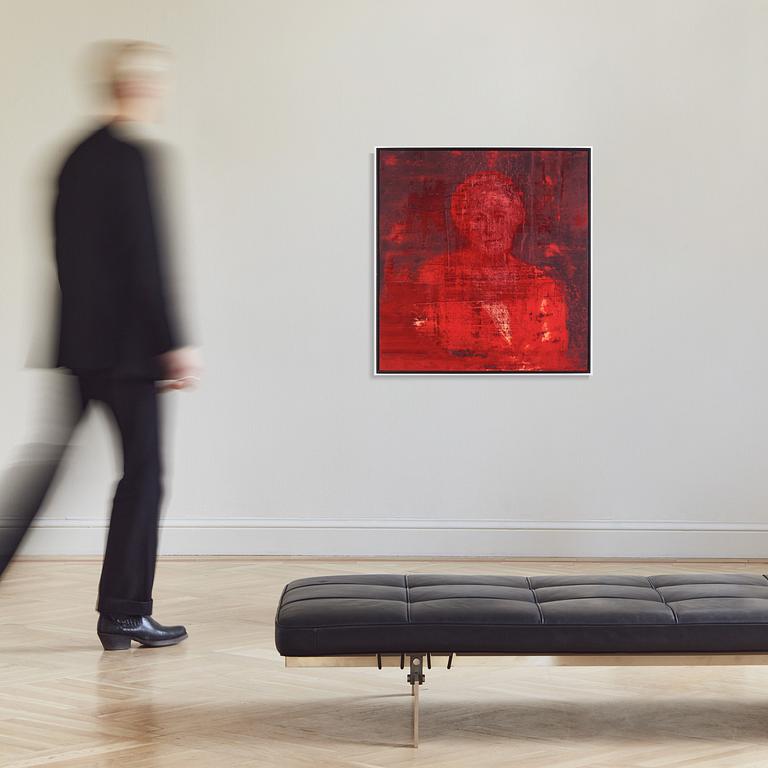Ola Billgren
”Porträttstudie, Hanna D.”
Signed Ola Billgren and dated -95 verso. Canvas 98 x 93 cm.
Provenance
Private Collection, Sweden.
Uppsala Auktionskammare, Internationella Kvalitetsauktion 18 - 20 May 2022, lot 594.
Private Collection, Stockholm.
More information
Ola Billgren's painting, ‘Portrait Study, Hanna D.’, brings together two important parts of his oeuvre: the photorealism of the 1960s and the fascination with the colour red that was so strong in the 1990s. Splashes of red began to appear in Billgren's paintings in the latter half of the 1980s, for example in ‘Historia’, 1986, and ‘Trettio år i Lund’, 1989, and later his interest in the colour scarlet gained momentum and he painted a whole series of red motifs. Billgren believed that the red pigment had a versatility that other colours often lacked, it could express both life and warmth but also aggressiveness. In the red paintings Billgren used photography in a new way. The photographic image was used as a model, first carefully painted with a brush, red in red, and then the motif was scraped off with a metal rake. The technique recalls the protracted nature of the photographic process, and the result is contradictory: the photographic image does not communicate directly to the viewer, but exists in the distance on the edge of visibility. Behind the veils of colour left by the scraper, one often glimpses a subject with intimate or romantic overtones, an interior, a garden, a café, or as in the painting in the catalogue - a human form. With his special colour treatment, Billgren has created paintings that touch us on all levels.
In the winter of 2010/2011, a number of Billgren's paintings from this period were exhibited at Bror Hjorths Hus in Uppsala, where the museum director shared his thoughts on Billgren's red masterpieces:
‘- Red strikes a chord with all of us,’ says Tomas Järliden, museum director at Bror Hjorths Hus. No other colour is so associated with our emotions as red. ‘I saw red’ we say when we get really angry and life appears “rosy” when we fall in love. Red also alludes to festivals and holidays. Celebrities walk the ‘red carpet’ and holidays are marked with red in the calendar. But red is also the colour of pain, guilt and shyness. Ola Billgren's red painting cannot be divided into any single category. It spans the entire emotional spectrum and individual scale of interpretation of the colour red.’
Artist
Ola Billgren was born in 1940 in Copenhagen but based his career in Sweden. Billgren was self-taught, having only been trained by his parents Hans and Grete Billgren. Ola worked within the mediums of graphic art, watercolour, collage, photography, film, and scenography. He was also an author and culture critic. Known for his versatility, Billgren cultivated a relationship between art and reality in his work.
During the 1960s, he transitioned from abstract expressionism to photographic realism. Over time, his paintings evolved into a fusion of abstract and photorealistic styles, resulting in romantic landscapes where he examined the interplay of light and color. Forms dissolved, and colors were reduced to monochrome, single-colored surfaces that were richly worked and varied.
In the late 1980s, he returned to urban environments in large cityscapes, often painted from a high perspective but maintaining the impressionistic approach seen in his landscapes. Ola Billgren's influence on recent decades of art has been significant. His work is represented in institutions such as Musée National d'art Moderne Centre George Pompidou in Paris and Moderna Museet in Stockholm.












































